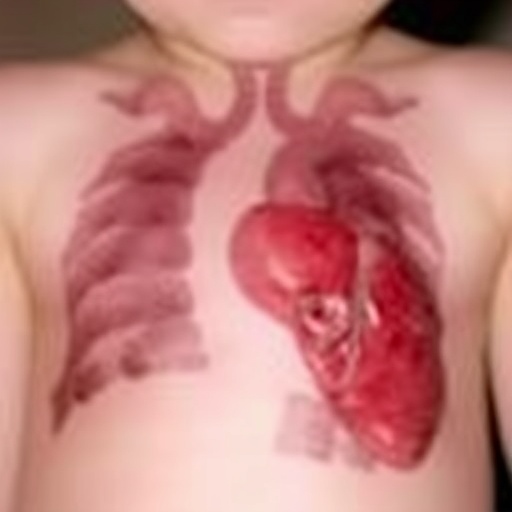
The ongoing pursuit of advancements in medical technology continually unveils the nuances inherent within critical care practices. One such area that has recently garnered attention involves the scrutiny of contamination in water supply systems used in extracorporeal circulation procedures, particularly in extracorporeal membrane oxygenation (ECMO). This crucial examination not only highlights the potential risks associated with these systems but also serves as a catalyst for implementing enhanced standards within healthcare facilities.
Extracorporeal membrane oxygenation represents a vital lifeline for patients experiencing severe cardiac and respiratory failure. This complex medical intervention necessitates the use of sophisticated equipment that facilitates the replacement of traditional pulmonary functions. While the benefits of ECMO are well-documented, the underlying systems that support its operation, particularly the water supply, often remain an overlooked component within the broader scope of risk assessment.
Recent investigations conducted by a team of researchers led by Sakakibara et al. have turned the spotlight on the water supply systems used during ECMO procedures. The study meticulously details how both cold and heated water supplies, integral to maintaining optimal system functionality, can become contaminated. Such contamination poses significant health risks, potentially compromising patient safety and outcomes. Therefore, understanding the mechanisms of contamination is paramount for healthcare providers and medical engineers alike.
A primary concern regarding water supply systems revolves around biofilm formation. Biofilms are complex communities of microorganisms that adhere to surfaces, including those within medical devices. These biofilms can harbor pathogenic bacteria, which pose a direct threat to patients reliant on ECMO for survival. An in-depth exploration of the conditions that facilitate biofilm development within these systems reveals a troubling synergy between temperature fluctuations, water quality, and system maintenance practices.
Another critical factor contributing to contamination is the variability in water treatment protocols employed by different medical institutions. Each facility may adopt unique methodologies for treating and monitoring water quality, which can lead to inconsistencies in the safety of water used during ECMO procedures. The researchers emphasize the need for standardized protocols that can be universally applied to ensure all patients receive equivalent protection from potential contaminants.
The findings from the investigation underscore the importance of rigorous monitoring practices. Regular testing of water samples from supply systems must become a non-negotiable aspect of ECMO protocols. Implementing a structured schedule for testing and maintenance could significantly mitigate the risk of contamination and the subsequent health implications for patients. This proactive approach is essential for safeguarding the integrity of the ECMO process.
In addition to monitoring, the role of education among healthcare professionals cannot be overlooked. An informed workforce equipped with knowledge about infection control measures and the importance of water system maintenance is vital. Training programs should incorporate modules focused specifically on the risks associated with water supply systems used in critical care, fostering a culture of safety throughout healthcare settings.
Moreover, the investigation raises pertinent questions regarding the impact of new technologies on traditional practices. Innovations such as the use of automated monitoring systems and advanced filtration methods could play a transformative role in managing water quality. As the healthcare landscape continues to evolve, the integration of such technologies may prove invaluable in enhancing patient safety and care outcomes.
While the focus lights on contamination risks, the implications extend beyond the immediate concern of patient safety. There exists a broader conversation surrounding healthcare economics and resource allocation. The potential for adverse patient outcomes stemming from contaminated water systems can lead to increased healthcare costs. Hospitals burdened with addressing complications arising from infections or prolonged ECMO usage may find their financial resources stretched thin, highlighting a critical need for systemic changes.
Additionally, the ethical considerations associated with patient care in ECMO settings demand attention. Healthcare providers must recognize their obligation to uphold stringent standards of care, prioritizing patient safety above all else. The knowledge that contaminated water supply systems can compromise the efficacy of life-saving interventions necessitates an unwavering commitment to quality assurance practices.
As the research unfolds, collaborative efforts involving medical professionals, engineers, and public health officials are essential for fostering improvements in water supply systems. By encouraging multi-disciplinary dialogues, the medical community can develop comprehensive strategies to address identified risks and create a safer environment for patients in need of ECMO and other life-saving procedures.
In conclusion, the investigation spearheaded by Sakakibara et al. is a pivotal contribution to the discourse surrounding patient safety and medical technology. The focus on contamination in water supply systems used during ECMO procedures offers invaluable insights that could spur significant advancements in practices and protocols. As we navigate the complexities of critical care, prioritizing the integrity of our medical systems shall remain a steadfast goal, ensuring that patient well-being remains at the forefront of healthcare advancements.
Subject of Research: Contamination in water supply systems for ECMO
Article Title: Investigation of contamination and environmental exposure of cold/heated water supply systems for extracorporeal circulation used in ECMO and other applications.
Article References:
Sakakibara, M., Kohira, S., Fujii, K. et al. Investigation of contamination and environmental exposure of cold/heated water supply systems for extracorporeal circulation used in ECMO and other applications.
J Artif Organs (2025). https://doi.org/10.1007/s10047-025-01518-7
Image Credits: AI Generated
DOI:
Keywords: ECMO, contamination, water supply systems, biofilms, patient safety, infection control, medical technology, healthcare standards, monitoring practices.
Tags: cardiac and respiratory failure treatmentscontamination in medical devicescritical care technology advancementsECMO water supply systemsextracorporeal membrane oxygenation procedureshealthcare facility standards for ECMOimproving ECMO patient outcomesmedical equipment hygiene practicespatient safety in ECMOresearch on ECMO safetyrisks of contaminated water in ECMOwater supply contamination mechanisms





